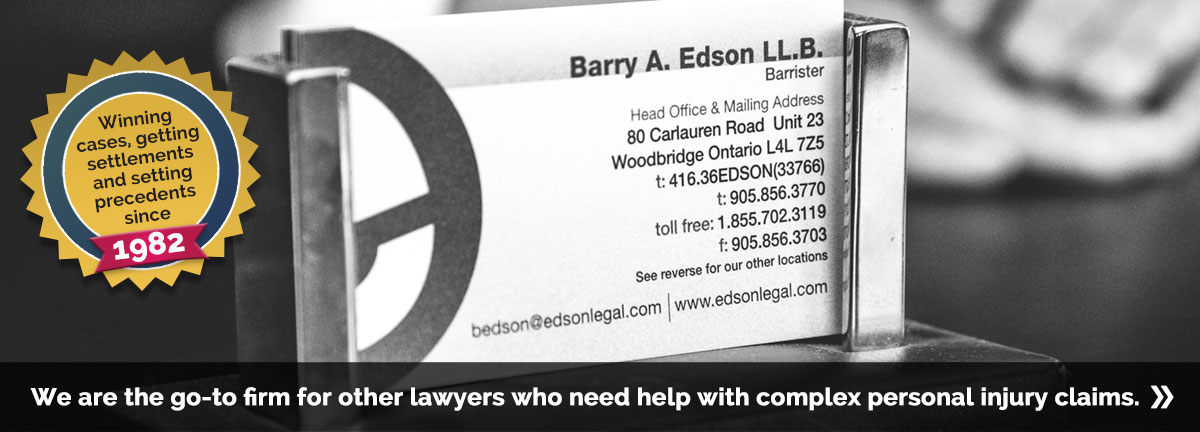It is no longer a secret that insurance companies are searching for that “smoking gun” on social networking websites to refute injury and disability claims. Indeed, what better refutation is there than a photograph showing the insured engaging in an activity inconsistent with the injury or disability which they allege?
However, what few know is that even if the insured’s social networking profile is supposedly private and accessible only to friends or persons in their network, an order for disclosure of the full social networking profile to the insurance company’s lawyers may sometimes be made. Unfortunately, case-law provides no clear guidance on when such an order will be made. In this regard, some cases have indicated that the mere discovery of a social networking profile may be sufficient evidence that relevant information exists for purposes of compelling discovery, while other cases take a much more restrictive approach and only order production where the public areas of the social networking profile provide “hints” that a more extensive search will reveal further evidence. The test in all matters appear to be relevance.
Put differently, “there must be evidence that posted photographs are relevant in order to justify an order for production”. (Knox v. Applebaum Holdings Limited, 2013, ONSC 7895, 2013 ONSC 7895 (CanLII) at para 18). Some cases have suggested that social networking profiles are presumptively relevant to claims based on personal injury or disability. Thus, in Leduc v. Roman, 2009 CanLII 6838 (ON SC) at para 32 it was held by the Ontario Superior Court of Justice that: “A party who maintains a private, or limited access, Facebook profile stands in no different position than one who sets up a publicly-available profile. Both are obliged to identify and produce any postings that relate to any matter in issue in an action.
Master Dash characterized the defendant’s request for content from Mr. Leduc’s private profile as “a fishing expedition”, and he was not prepared to grant production merely by proving the existence of the plaintiff’s Facebook page. With respect, I do not regard the defendant’s request as a fishing expedition. Mr. Leduc exercised control over a social networking and information site to which he allowed designated “friends” access. It is reasonable to infer that his social networking site likely contains some content relevant to the issue of how Mr. Leduc has been able to lead his life since the accident.” This approach was also followed in Murphy v. Perger, [2007] OJ No 5511 (SCJ): “It seems reasonable to conclude that there are likely to be relevant photographs on the site for two reasons.
First, www.facebook.com is a social networking site where I understand a very large number of photographs are deposited by its audience. Second, given that the public site includes photographs, it seems reasonable to conclude the private site would as well.” In other cases, the courts have taken a “judicial peak” at the information on the social networking site to determine if they are relevant, without allowing the defense. Where the court’s own review revealed no relevant photographs, the court declined production on privacy grounds:
• Stewart v. Kempster, 2012 ONSC 7236 (CanLII): The Ontario Superior Court of Justice refused production of the plaintiff’s Facebook account where the plaintiff claimed that she was unable to participate in recreational and social activities to extent that she had before accident. The court reviewed the images (without the defense being able to see them) and held that the photographs did not show the plaintiff engaging in any athletic activity beyond sightseeing. The court further held that a request for production of all content of a private portion of a Facebook account is shockingly intrusive, especially where the claim for production was based on nothing more than speculation.
• Garacci v. Ross, 2013 ONSC 5627 (CanLII): The Ontario Superior Court of Justice refused production of the plaintiff’s Facebook account where the plaintiff alleged that she suffered injuries to her left leg and ankle including a fracture of her left ankle. The court conducted a random review of the pictures and determined they were not relevant as they did not reveal “any significant physical activity” by the plaintiff. The relevancy test appears to have also been adopted in cases before the Financial Services Commission of Ontario (FSCO) and no automatic right of access has been found to exist. In this regard, in Rakosi v. State Farm Mutual Automobile Insurance Co. (2012), 2012 CarswellOnt 7066 (F.S.C.O. App.) it was found that Facebook pictures were not prima facie producible, but the test was still one of relevance. In that case, production was ordered where the claimant had posted pictures of himself zip lining on a public Hi5 profile and these pictures were found to be relevant to the issues in dispute. It was found that, “I see no error in extending the inference from unrestricted access documents on one site to restricted access documents on a similar site”.
The FSCO has also refused production on at least one (1) occasion. In this regard, in Prete v State Farm Mutual Automobile Co, 2011 CarswellOnt 1019 (WL Can) the FSCO found that the public profile of the claimant contained no relevant photographs and therefore a proper evidentiary basis did not exist to order disclosure of the private profile. It therefore appears that relevance is the guiding criteria in determining whether production will be ordered of social networking profiles in personal injury cases. In determining relevance, regard will be had to factors such as (a) the nature of the claim and alleged injury or disability, (b) the existence of evidence on the public profile which “hints” at relevant information existing on the private profile, and (c) the court or arbitrator’s own review of the private information to determine relevance.




